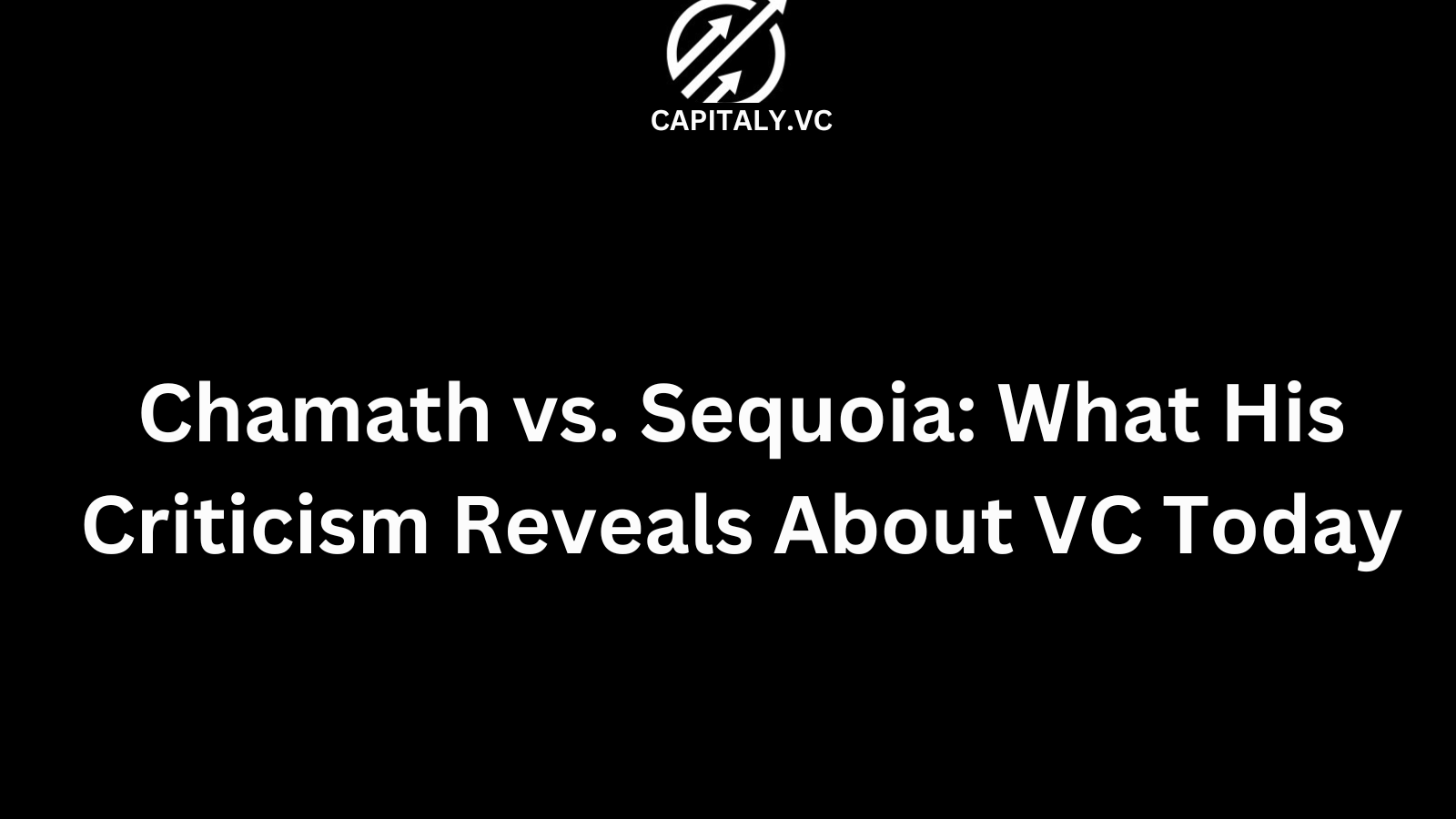Chamath Palihapitiya doesn’t hold back.
And when he publicly criticizes Sequoia Capital — arguably the most powerful VC firm in Silicon Valley — you know he’s not just stirring the pot.
He’s calling out an entire system.
In this blog, we’ll break down Chamath’s beef with Sequoia, what it says about the current state of venture capital, and why founders need to understand the VC game as it evolves in real time.

1. Where the Drama Started: Chamath Calls Out Sequoia
In multiple All-In Podcast episodes and public interviews, Chamath has made pointed remarks about:
- Sequoia’s risk tolerance
- Their decision-making in the FTX debacle
- Their shift to global asset management vs. true venture
- The collapse of Sequoia’s crypto fund and China strategy
He didn’t mince words:
“When you stop being a venture firm and start acting like BlackRock, things break.”
2. What Did Sequoia Actually Do?
Here’s a brief timeline:
- FTX investment: Sequoia invested $150M in Sam Bankman-Fried’s exchange — and later wrote it off to zero.
- Massive global funds: Sequoia launched multi-billion dollar vehicles that looked more like hedge funds than venture bets.
- Sequoia China spinout: After geopolitical pressure, the firm had to split its global empire into independent brands.
To Chamath, this wasn’t innovation — it was mission drift.
3. Chamath’s Core Critique: Venture Capital Has Lost Its Soul
According to Chamath, the industry is no longer:
- Betting on outliers
- Building alongside founders
- Taking high-integrity risks
Instead, VCs are:
- Spraying money across every trend
- Following consensus
- Optimizing for management fees, not returns
“It’s not venture capital. It’s venture allocation.”
4. Why Founders Should Care
Because the VC you choose isn’t just a check — it’s a co-architect of your cap table and story.
Chamath’s criticism implies:
- Some top-tier firms are no longer founder-first
- You may be a line item in a global allocation machine
- Advice from your VC may be driven by fund math — not what’s best for you
5. Sequoia’s Response: Evolve or Die
To be fair, Sequoia isn’t clueless.
They’ve:
- Spun out Sequoia Heritage, Sequoia China, and Sequoia India into standalone units
- Acknowledged mistakes like FTX publicly
- Returned to “smaller funds, tighter theses” in their U.S. core fund
But the perception shift is real — and Chamath is giving it voice.
6. The Real Divide: Operator-Investors vs. Asset Managers
Chamath positions himself (and others like David Sacks) as:
- Hands-on
- Capital-efficient
- Focused on product, not paper returns
He contrasts this with “spreadsheet VCs” managing billions, with diluted accountability.
For founders, the question becomes:
Do you want a capital partner — or a capital allocator?
7. Where Chamath Still Respects Sequoia
It’s worth noting: he still respects the original Sequoia DNA.
- Don Valentine
- Mike Moritz
- Alfred Lin (still active, despite FTX)
Chamath’s critique isn’t hate. It’s disappointment in what the industry has become.
8. The Capitaly Take: Know Who You’re Taking Money From
Founders today need to be:
✅ Cap table literate
✅ Fund strategy aware
✅ Clear on LP incentives
✅ Skeptical of brand-name VCs without value alignment
Just because a firm has a powerful brand doesn’t mean they’re aligned with your long-term success.
9. If You're a Founder: Ask These Before Taking a Term Sheet
- Who will actually sit on your board?
- What is their fund size — and does your check size matter?
- How long is their fund cycle?
- Do they lead or follow?
- Are they still in the founder-first business — or in the fee business?
10. This Isn’t Just About Sequoia — It’s About VC’s Identity Crisis
Chamath’s attack on Sequoia is just a proxy for something bigger:
Venture capital is at a crossroads.
- Should it stay boutique and contrarian?
- Or become a capital deployment machine?
Startups don’t just need capital.
They need belief, time, and courage — which can’t be automated or asset-managed.
FAQs
1. What did Chamath say about Sequoia?
He criticized their FTX investment, fund sprawl, and shift toward global asset management.
2. Why is this a big deal?
Because Sequoia has long been the gold standard of VC — and Chamath’s critique breaks the “no-punches-thrown” tradition.
3. What’s the problem with big funds?
They often chase growth at the expense of risk discipline, founder alignment, and hands-on support.
4. Has Sequoia responded directly?
Not to Chamath — but they have acknowledged their mistakes and restructured parts of their firm.
5. Should founders still raise from Sequoia?
Yes — but ask the right questions. Don’t be blinded by the logo.
6. What does Chamath think VC should be?
Thesis-driven, contrarian, aligned with founders, and small enough to take real risks.
7. What’s the difference between a good VC and a good allocator?
A VC builds with you. An allocator bets on a spreadsheet.
8. How can founders protect themselves?
Understand your investor’s fund structure, timeline, and motivation.
9. Is this just about Sequoia?
No — it’s about how the whole VC ecosystem is changing (and not always for the better).
10. Where can I learn how to fundraise strategically?
Start here: Fundraising Is a Process, Not a Project
Conclusion
Chamath vs. Sequoia isn’t a personal feud — it’s a spotlight on the evolving identity of venture capital.
As the lines blur between operator-investors and global allocators, founders must become radically clear on who’s really backing them.
Your investor’s brand might look great on the slide.
But it’s their behavior at your board table — in good times and bad — that really matters.
Subscribe to Capitaly.vc Substack (https://capitaly.substack.com/) to raise capital at the speed of AI.


.png)